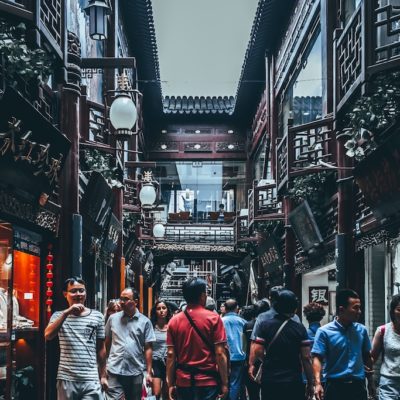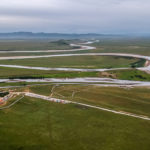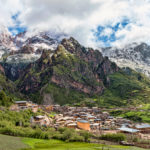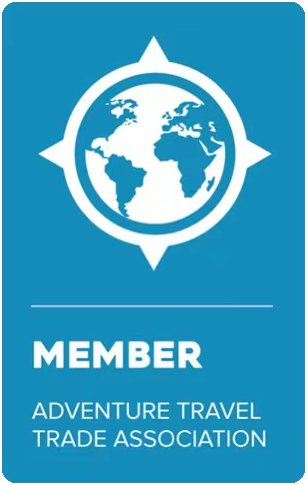March 4, 2020
Travel in China after the 2020 coronavirus
China is very quiet right now because of the coronavirus
China, a country of 1.4 billion very busy people, is known for its lights and sound amidst a buzzing, ever moving population. But recently China has been eerily quiet in February and March 2020 as people have been locked in their homes and almost no one is in the streets or airports. For the first time in 20 years, traffic is not a problem as few cars are in the road, and consequently urban pollution has also significantly dropped. As spring unfolds, the skies are blue, the streets are quiet, and a whole new China has emerged.
Right now at least 50% of the population of our city of 2 million are still stuck at their parents’ or grandparents’ homes in the countryside. Every year the largest migration in human history happens as Chinese return to their laojia 老家 – or the place of their birth – over the Chinese New Year Festival. As one of the only annual breaks in the fast paced life of urban consumers, this means people largely exit urban areas and return home to make dumplings and remember a simpler way of life with the family and friends they grew up with.
This Chinese New Year vacation usually lasts about 1-2 weeks and then most people are back to work and school sometime between February 15-March 1, depending on the lunar calendar dates. But, as the Coronavirus has limited travel and movement, so many of these workers are still stuck in their ancestral homes. That means in our city of Xining, China at least half of our population has not returned from their unexpectedly extended holiday.
In a time when there would usually be millions of students descending back into dorms and public education facilities, schools are still closed and most public schools have started online classes where teachers live stream the class with students over less-than-perfect internet connections. Most international schools for foreigners are projecting targets for opening their facilities again sometime between March 15- April 1. But many university students are still waiting for a word on exact opening dates.
In Xining, only about 15% of businesses are open. There are a few restaurants and grocery stores open and most government offices are open. But otherwise most things are closed at the beginning of March 2020.
Tourism infrastructure is closed
In March 2020 the Coronavirus seems to be to tapering down in China even as we’re starting to see greater spread of the virus in places like Italy, Korea, and Iran. China has done an excellent job of blocking the spread of the virus and we are seeing the numbers of infected patients start to decrease everyday in China.
Things are slowly reopening in China and life (and traffic) is starting to get back to normal. But for now, what that means for you as a traveler is that most national parks and public tourist destinations are probably closed. In Qinghai, our top two destinations for tourism are Qinghai Lake 青海湖, China’s largest salt lake, and Taer Si 塔尔寺aka Kumbum Monastery. Both of these destinations are closed for now as most public spaces (including gyms and schools and parks) are closed to decrease the spread of Coronavirus.
Even if these destinations were open, it would be hard to find transportation to get there. Most private taxi and van drivers are very hesitant to go out at this time because they do not want to be exposed to travelers who might have encountered the virus. These drivers are also hesitant because there are many quarantine check points on the roads where the police stop your car and check your temperature along the road. Most drivers are afraid of being stopped at these checkpoints because they can cost both money and time for the driver. Often, as a driver, you need special permissions or certifications to pass through these checkpoints during this time of extra regulation; crossing through them could mean that drivers might risk losing their Chinese driver’s license. And
So the sheer lack of tourist infrastructure (cars, hotels, open parks, available guides, open tourism agencies) means that you are going to have a hard and frustrating time getting around as normal. That is one major hurdle for travel in the wake of the CoronaVirus.
Entering into Quarantine
Another major obstacle is that when you travel in China you are probably going to have to enter into a 7-14 day quarantine in the house or hotel you arrive in from your airport or train station. This helps decrease exposure to coronavirus as the coronavirus generally has an incubation period of 14 days. So by placing travelers into a quarantine as soon as they arrive in a new city, China is largely removing the possibility of spreading the virus from abroad. Also you can be expecting several temperature checks when you move in and out of airports and public spaces.
For example, on February 27, 2020 my family just flew from Bangkok, Thailand to Shanghai to Xining. Along the way, the flights and airports were fine and there were no unexpected problems or delays. Actually, because of the fear of contracting the virus, there was almost no people in the airports. Shanghai Hongqiao SHA airport, a busy airport that supports both international and domestic flights for China’s premier economic hub and that boasts over 100 different gates and several terminals, had only a few people in it and largely felt like a ghost town, even in the middle of the day. It only took about 5-minutes to check in and get through security which was really nice. This tells me, though, that there’s not a lot of people travelling because they want to avoid a 14 day quarantine or possible increased chances of infection in public spaces.
When you are traveling domestically or internationally in China (even from within one province) you’re probably going to be put in a 7- 14-day quarantine in the destination you arrive in at your house or hotel. This basically means that there’s no reason for you to travel because if you travel see a new destination in China you will not be able to be out and about but will be stuck inside one room for 14 days. In our case, in Xining, when we arrived from Bangkok, the local authorities or 社区 put a large taped “X” over the outside of our apartment door and we were not allowed to break the seal or leave our apartment for 14 days. This meant we had to purchase our groceries online or via the Meituan app and had to have them delivered to our first floor apartment window. The delivery man actually had to hand the groceries into our window as we were not allowed to physically open our apartment door.
So I recommend not traveling in China in March 2020. If you can push your travel plans back too maybe April 15 it would be a lot better. But that that would be a minimum for traveling and most tourism related areas will not start to reopen until even after these dates. As of now, the government has not issued any specific dates on the reopening of National Parks and tourist sites in China as they are waiting to see how the Coronavirus plays out in the next few weeks. However, most of my friends in the travel industry suspect that if trends in the virus continue as they have, most places in China should be back to normal and open again by April 15.
So I believe with current trends that China should be reopen to travel by May 1, 2020. Once the coronavirus has been contained, the tourism industry in China will be open for foreigners and desperately needing a new infusion of income. Many tourism operators, including hotels, drivers, guides, tour agencies, and entrance ticket facilities have taken a huge hit and seen virtually no business for the last 2 months. This has had a crippling effect on the overall tourism economy in China.
So please do come to China in summer or fall 2020. On behalf of the tourism industry in China, we will need your business more than ever.







